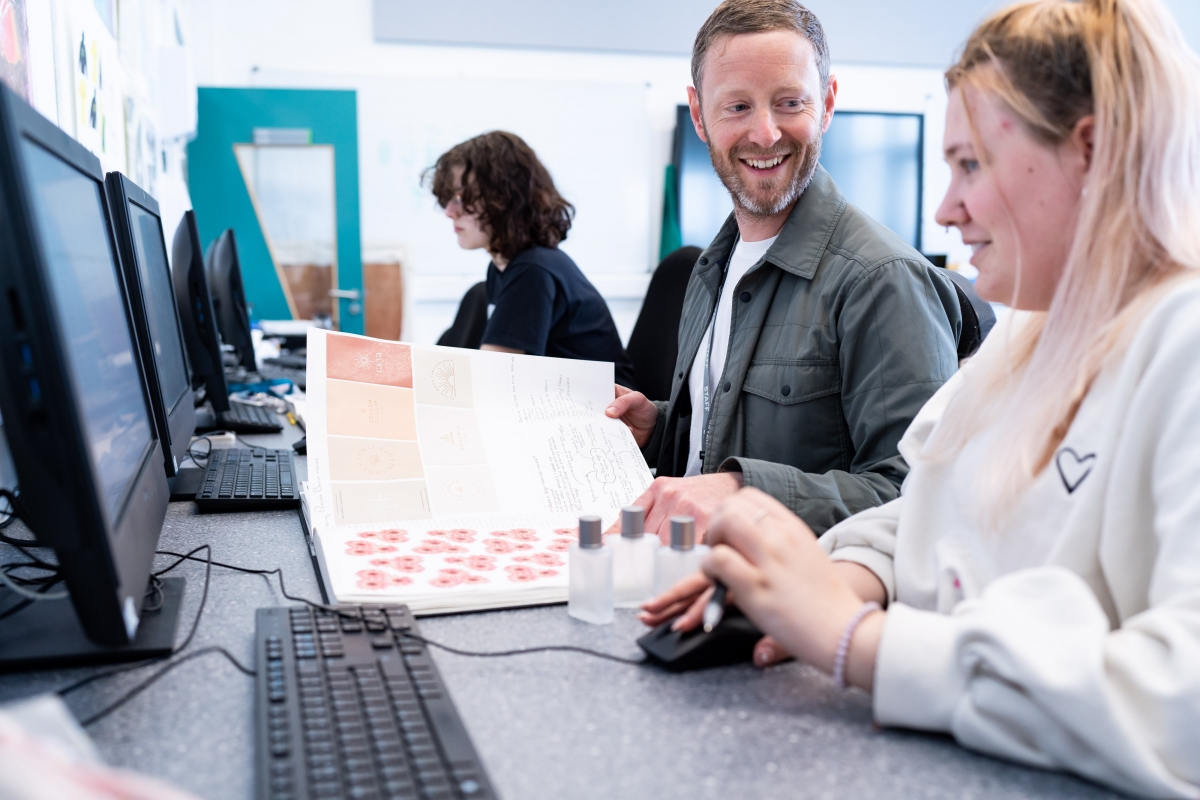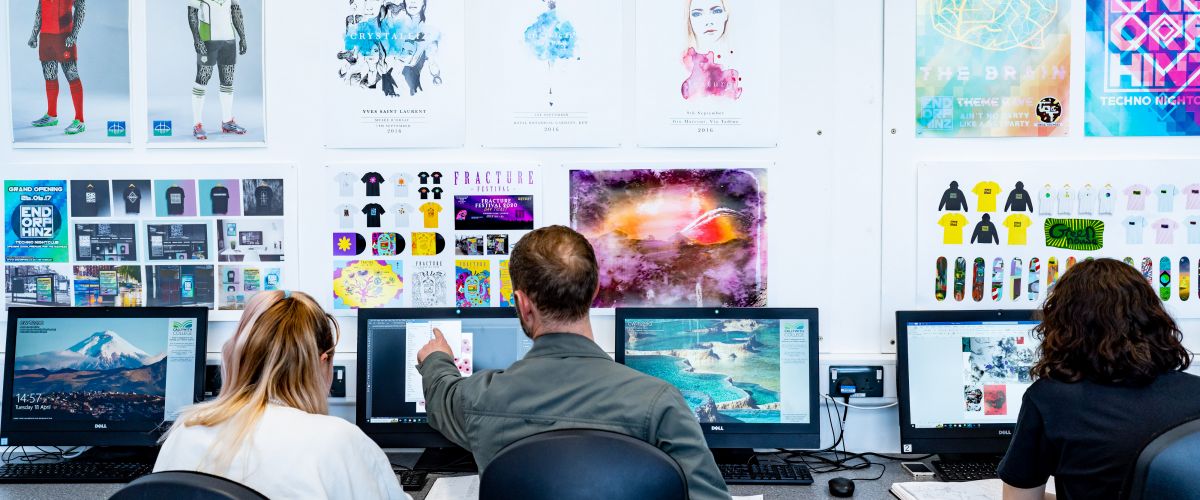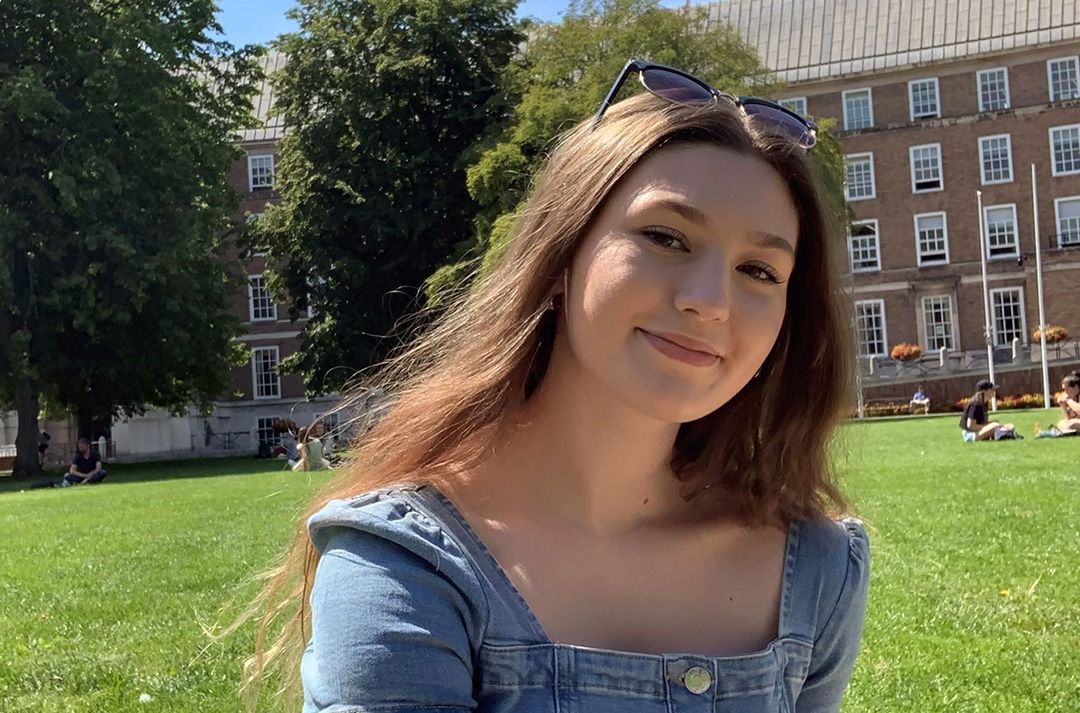A Level Art & Design: Illustration & Graphics
Do you possess a lively, enquiring mind? Do you enjoy developing your ideas through drawing and utilising a range of processes towards a final product? During the Illustration/Graphics course, you will learn to develop design solutions, exploring the power of visual communication as an invaluable commercial tool. The course is structured to support and develop your confidence and individual strengths, from illustrative and traditional studio-based skills through to more graphics and digitally based practice, allowing for a broad and creative approach to design.
Key information
Art & Design / Full Time / A Levels and Equivalent

Why choose this course?
You will begin the course with a range of varied and challenging workshops developing fundamental skills and knowledge integral to the world of Illustration and Design. Workshops are a mix of traditional and contemporary processes; these include experimental drawing and playful image making for students who wish to take the more traditional approach. Digital workshops offer all students access to develop skills in industry standard software including Adobe Photoshop, Illustrator and InDesign. Other aspects you will explore include typography, thumbnail sketches, layout design, mixed media, extending these further through digital media. You will research a range of illustrative and graphic styles, applying this knowledge to develop your individual practice.
The research and development of your concepts and designs are gathered in your sketchbook. Documenting and constantly reflecting on your creative development, you will become skilled in communicating ideas visually, to meet your clients’ needs. By the end of the first year, you will have produced a body of work which documents your creative thinking and design process.
The second year builds on your learning in the first year. There is one personally negotiated, focused coursework project and one exam project. As well as building on your evolving visual identity, there is a small written element; this is supported by group presentations strengthening your analytical skills through both discussion and written work. Towards the end of the course you are given eight weeks lecture time to prepare for a 15-hour exam. The preparation time forms a personal project responding to a chosen exam theme; the 15 hour exam time is used to create a final piece which resolves this project.
What will I learn?
Component 1: Personal Investigation
Internally Assessed
60% of A Level
The Personal Investigation consists of a major in-depth, practical, critical and theoretical investigative project/themebased portfolio. Learners will be required to carry out an extended critical and contextual analysis (1000 word minimum requirement).
Component 2: Externally Set Assignment
Internally Assessed
40% of A Level
Learners will be required to independently develop a personal response to one of a varied range of stimuli. Learners will develop their response during a preparatory study period culminating in a 15 hour sustained focus study.
Assessment Arrangements
The Art Department is friendly, supportive, ambitious and hardworking. Achievement in this subject relies heavily on your attendance, punctuality and commitment to learning, both independently and within lectures.
You will be encouraged to try a broad range of approaches, which you will then refine into ways of working which suit your individual interests, acquiring and developing specialist skills in your chosen discipline.
Independent work is fundamental to the course; at least 50% of all work assessed should have happened outside the classroom.
Homework is set weekly. Initially it is set by lecturers and will be tightly specified and closely linked to class workshops; it will be monitored regularly. As the course develops you will be required to set your own homework/independent work based on agreed learning needs.
Your ongoing work will be assessed in lessons through focused 1:1 discussion. Sketchbook work will be assessed regularly for reflective, thoughtful, analytical critical evaluation and annotation. Emphasis is upon the development towards a final piece, through observation and technical, aesthetic and conceptual refinement.
You will also be assessed against how your research of art, craft, design, media and technologies in contemporary and past societies and cultures improves your own understanding and practice.
Discussions and presentations are a vital part of our assessment process and you will be expected to contribute to these during your lessons.
Information & Support
Independent practice will be supported through PowerPoints, worksheets and other guides available through our Sharepoint course. We also provide further support through focused boards on Pinterest. College trips to visit museums and galleries will be offered and we encourage our students to visit galleries both locally and nationally to support their work.
What will I need?
Five GCSEs at grade 4 or above (including Art) and English (Lang. or Lit) at grade 5. You will also require a keen interest in drawing to develop your creativity, as a design stimulus and as a means of gathering creative ideas and making them visible is absolutely essential.
Where will it take me?
You can progress directly from A Level to an arts degree such as Graphic Design, Visual Communication, Illustration, Games Design and Multi-Media Design. Employment as a graphic designer is the clearest route but this course also offers a way into illustration or, with further study, animation; you could work for the media, an advertising company or design agency.
Additional Information
Awarding Body:
Eduqas
To obtain more information about this course, please call: 01208 224000 or email enquiry@callywith.ac.uk

